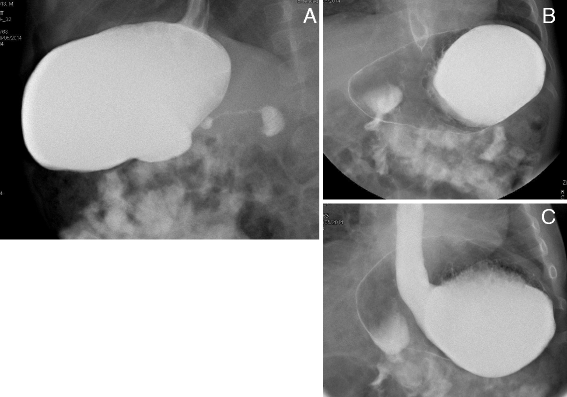Gastric volvulus in children--a diagnostic problem: two case reports
- PMID: 27241456
- PMCID: PMC4886394
- DOI: 10.1186/s13256-016-0934-3
Gastric volvulus in children--a diagnostic problem: two case reports
Abstract
Background: Gastric volvulus is a clinically significant cause of acute or recurrent abdominal pain and chronic vomiting in children. Since related clinical symptoms are nonspecific, clinicians often refer to radiologists for a diagnostic evaluation. Early diagnosis is crucial to prevent life-threatening complications of prolonged volvulus, such as intestinal ischemia, infarction, strangulation, necrosis, and perforation that may require immediate surgical treatment. In this report, we describe clinical and radiological criteria for diagnosis of gastric volvulus in children.
Case presentation: We describe two pediatric clinical cases. A 16-month-old female Caucasian child was admitted to our hospital for recurrent postprandial vomiting episodes, which started at 11 months old, associated with failure to thrive. A 9-month-old term-born baby boy was admitted for chronic, recurrent, postprandial vomiting, which started at 7 months of age, with progressive failure to thrive. A barium study allowed definitive diagnosis of chronic organoaxial gastric volvulus.
Conclusions: Gastric volvulus is an extremely rare disorder in the pediatric population. It can be considered a complex clinical condition with regard to the etiology and the management. A nonoperative approach is advisable in the absence of warning signs.
Keywords: Computed tomography; Gastric volvulus; Pediatrics; Radiography; Vomiting.
Figures


References
Publication types
MeSH terms
Substances
LinkOut - more resources
Full Text Sources
Other Literature Sources

